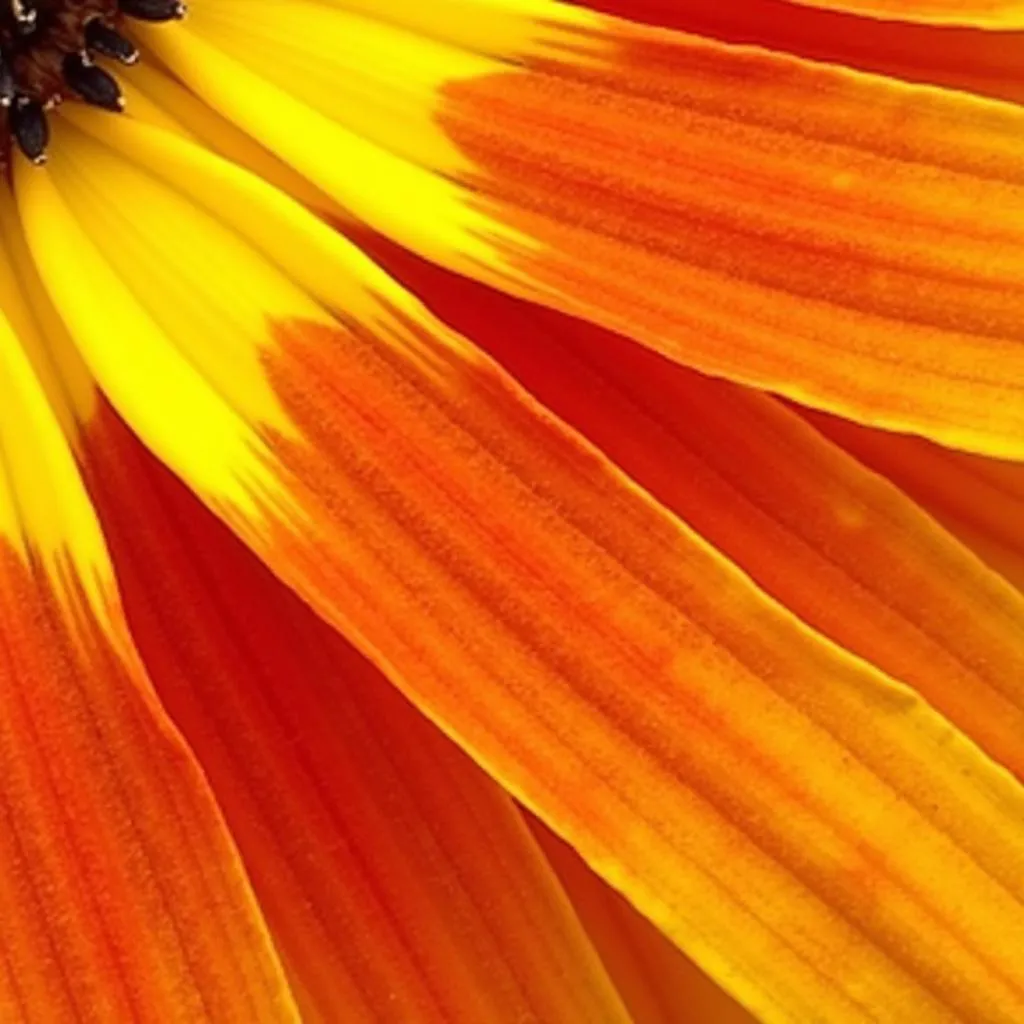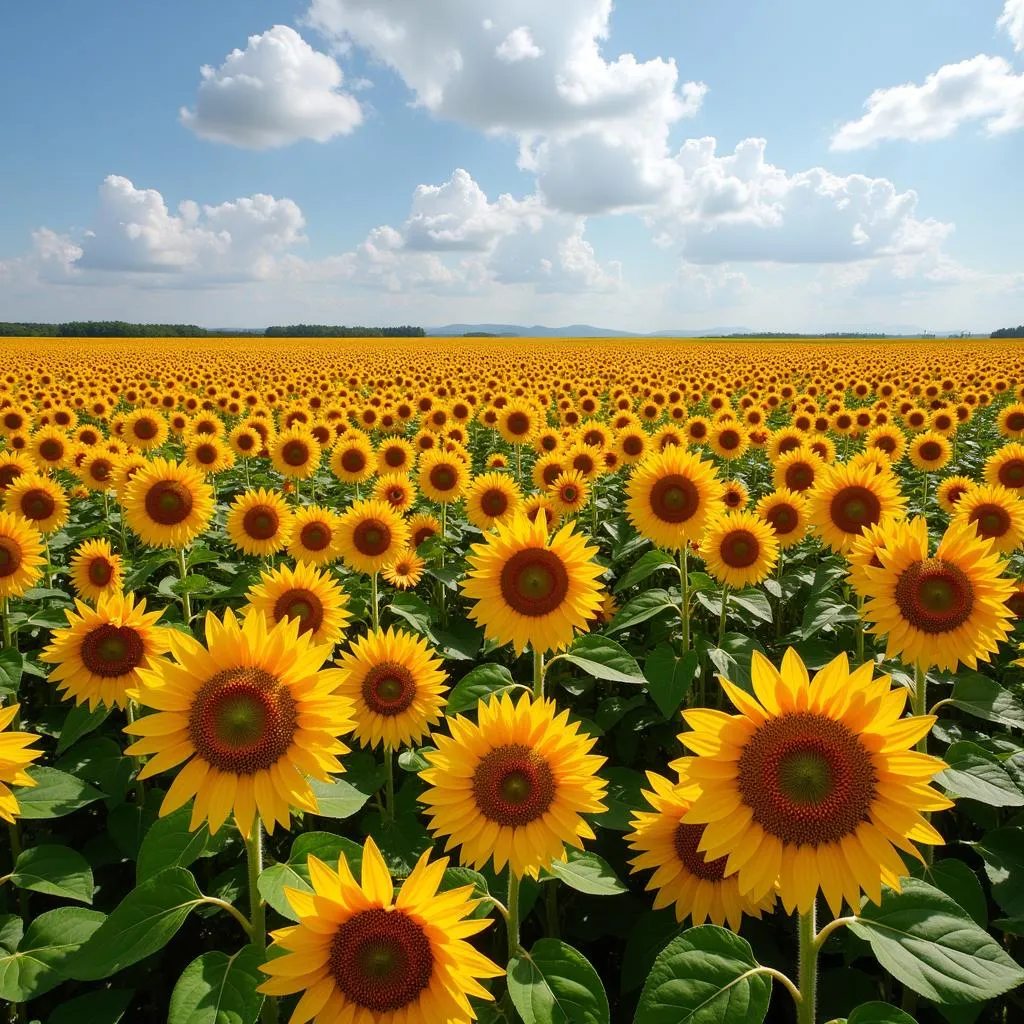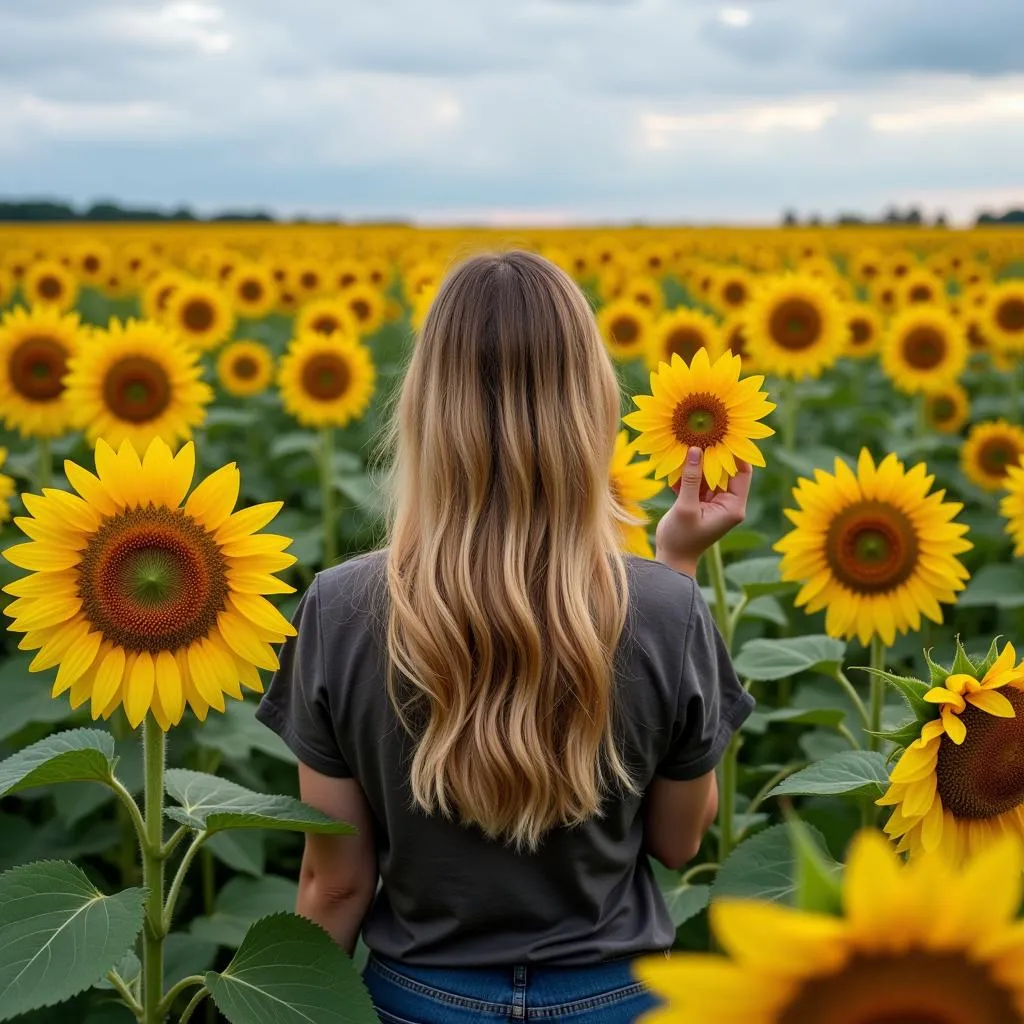Sunflowers are instantly recognizable with their bright yellow petals and impressive size. But did you know that sunflowers can come in a surprising variety of colors besides the classic yellow? That’s right, sunflowers aren’t limited to just one shade. Let’s dive into the captivating world of sunflowers and explore the spectrum of colors they can exhibit.
Beyond the Typical Yellow: Unveiling the Diverse Hues of Sunflowers
While the most common sunflower color is undoubtedly yellow, these cheerful blooms can surprise you with shades of orange, red, brown, and even multi-colored varieties. The color variations are primarily determined by the pigments present in the sunflower’s petals.
The Science Behind Sunflower Colors
The vibrant hues of sunflowers are a result of different pigments working their magic:
- Carotenoids: These pigments are responsible for the yellow, orange, and reddish hues. They are the same pigments found in carrots and give sunflowers their characteristic warm tones.
- Anthocyanins: These pigments contribute to red, purple, and bluish shades. While less common in sunflowers, certain varieties exhibit varying levels of anthocyanins, resulting in stunning and unique color combinations.
- Melanin: This pigment produces brown and black colors. In sunflowers, melanin is often responsible for the dark center disk but can also influence petal shades in some varieties.
 Sunflowers in shades of yellow, orange, and red
Sunflowers in shades of yellow, orange, and red
Factors Influencing Sunflower Color
Several factors can impact the color of sunflowers, adding to their diversity:
- Genetics: Just like humans, sunflowers inherit traits from their parent plants. Specific genes dictate the type and amount of pigments produced, resulting in distinct colors.
- Environmental Factors: Sunlight, temperature, and soil conditions can subtly influence pigment production. For example, sunflowers grown in cooler temperatures might exhibit more intense colors.
- Pollination: Cross-pollination between different sunflower varieties can lead to exciting new color combinations. Bees and other pollinators play a crucial role in transferring pollen and influencing the genetic makeup of future sunflower generations.
Popular Sunflower Color Varieties
Ready to embrace the rainbow of sunflowers? Here are some popular color varieties to look out for:
- ‘Lemon Queen’: As the name suggests, this variety boasts bright, lemony-yellow petals, adding a cheerful touch to any garden.
- ‘Terracotta’: This unique variety showcases warm, earthy tones with petals ranging from deep orange to reddish-brown, reminiscent of terracotta pottery.
- ‘Chianti’: Known for its dramatic appearance, ‘Chianti’ sunflowers feature deep, velvety red petals, creating a striking contrast against the dark center disk.
- ‘Ring of Fire’: This aptly named variety displays a captivating ring of reddish-orange petals surrounding a dark center, resembling a fiery halo.
 A field of sunflowers in various colors
A field of sunflowers in various colors
More Than Just a Pretty Face: The Significance of Sunflower Colors
Sunflower colors hold significance beyond their visual appeal:
- Attracting Pollinators: The vibrant colors of sunflowers, especially the contrasting patterns, act as beacons for pollinators like bees and butterflies, guiding them towards the nectar and pollen.
- Seed Production: The color of a sunflower can sometimes indicate the maturity of its seeds. As sunflowers mature, their petals often deepen in color, signaling that the seeds are ready for harvest.
Choosing the Right Sunflower Colors for Your Garden
With such a diverse palette to choose from, selecting the perfect sunflower colors for your garden can be an exciting endeavor. Consider the following factors:
- Personal Preference: Ultimately, the best sunflower colors are the ones you find most appealing. Whether you prefer classic yellow, fiery orange, or deep red, there’s a sunflower variety to suit every taste.
- Garden Design: Think about the existing color scheme of your garden and choose sunflower colors that complement or create interesting contrasts with other plants.
- Occasion: Different sunflower colors can evoke different moods and atmospheres. For a cheerful and vibrant display, opt for bright yellows and oranges. For a more dramatic and romantic feel, consider deep reds and multi-colored varieties.
 A gardener choosing from different sunflower varieties
A gardener choosing from different sunflower varieties
Conclusion
From the classic sunny yellow to the unexpected deep reds and multi-colored wonders, the world of sunflowers is more colorful than one might imagine. As you explore the different shades and varieties, remember that each sunflower, regardless of its color, embodies the spirit of joy, warmth, and natural beauty. So, embrace the spectrum, experiment with different colors, and let your garden bloom with the captivating charm of sunflowers.
FAQs
Q: Are all sunflowers yellow?
A: While yellow is the most common color, sunflowers come in a variety of colors including orange, red, brown, and multi-colored varieties.
Q: What determines the color of a sunflower?
A: The color of a sunflower is primarily determined by its genes, which dictate the type and amount of pigments produced. Environmental factors and cross-pollination can also influence color.
Q: Can I plant different colored sunflowers together?
A: Absolutely! Planting different colored sunflowers together can create a visually stunning and diverse display in your garden.
Q: Do different colored sunflowers have different meanings?
A: While there are no official meanings associated with different sunflower colors, they can evoke different emotions and symbolism. For instance, yellow sunflowers are often associated with happiness and cheerfulness, while red sunflowers might symbolize passion and love.
Q: Where can I find seeds for different colored sunflowers?
A: You can find seeds for a wide variety of sunflower colors at garden centers, nurseries, and online retailers specializing in seeds and plants.

